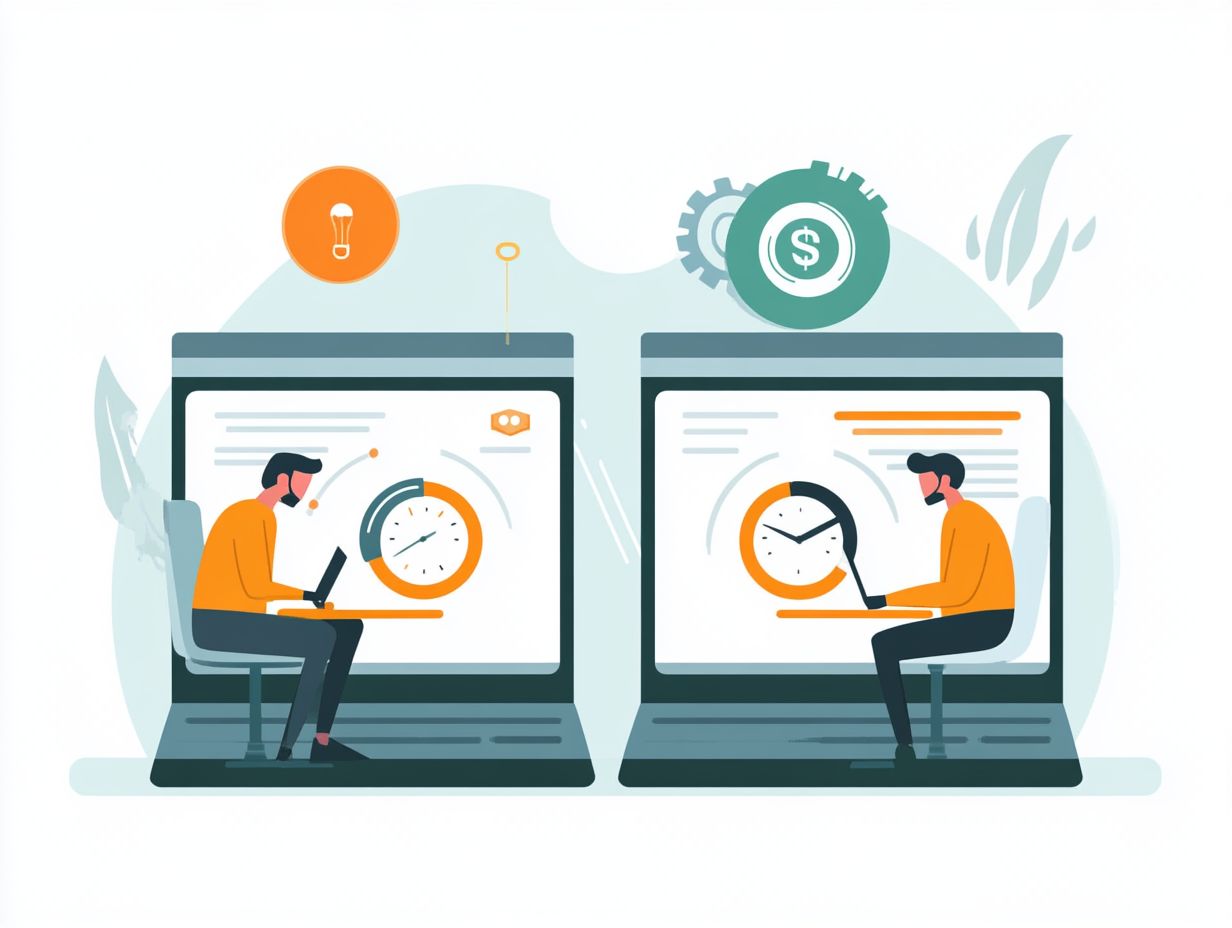The Impact of Page Speed on Conversions
In today s fast-paced digital landscape, the speed at which your web pages load can profoundly influence your online success. Page speed impacts user experience and is crucial in converting casual visitors into loyal customers.
This article delves into the importance of page speed, the various factors that influence it, and effective strategies to measure and enhance it. Real-life case studies illustrate both triumphs and challenges, offering valuable insights to help you maximize your website s performance.
Explore how optimizing page speed can lead to improved conversions and a more gratifying user experience.
Contents
- Key Takeaways:
- The Importance of Page Speed
- Factors Affecting Page Speed
- Measuring Page Speed
- The Relationship Between Page Speed and User Experience
- Improving Page Speed for Better Conversions
- Case Studies: Real-Life Examples of Page Speed Impact on Conversions
- Common Questions About Page Speed and Conversions
- How does page speed affect conversions?
- What is considered a good page speed for conversions?
- What are some factors that can affect page speed?
- How can improving page speed increase conversions?
- What tools can help measure page speed and its impact on conversions?
- What steps can be taken to optimize page speed for conversions?
Key Takeaways:

- A slow-loading page can significantly impact conversion rates, leading to loss of potential customers and revenue.
- Technical and design elements, such as image sizes and server response time, play a crucial role in determining page speed.
- Improving page speed not only enhances user experience but also increases the chances of conversions, making it a crucial aspect of website optimization.
The Importance of Page Speed
Page speed plays a pivotal role in the success of your website, shaping crucial metrics such as user experience, bounce rate, and conversion rates. With digital marketing taking center stage, it’s essential for you to prioritize optimizing your load times to meet user expectations and align with Google s Core Web Vitals criteria.
A website that loads swiftly not only boosts user engagement but also has a direct impact on sales, as users are far more inclined to stay on a site that performs well. In today s competitive landscape, employing tools like NitroPack can dramatically enhance your page speed, leading to improved overall performance.
Why Page Speed Matters for Conversions
Page speed is closely linked to your conversion rates; studies have shown that even a small improvement of 0.1 seconds can lead to substantial increases in sales. For example, research reveals that websites loading in under three seconds boast a bounce rate of about 32%, while those taking five seconds can see that number soar to a staggering 90%. This striking disparity underscores the importance of prioritizing speed, as faster sites attract users and keep them engaged for longer.
In fact, an impressive 70% of online consumers report that page speed directly influences their willingness to make a purchase from an online retailer. Therefore, investing in speed optimization is not just beneficial it’s essential for enhancing your digital marketing results, ultimately leading to greater customer satisfaction and increased revenue.
Factors Affecting Page Speed
Numerous factors can profoundly impact your website’s page speed. These include the efficiency of rendering resources, optimization of images, implementation of effective caching strategies, and the overall load time of your site. Each element plays a crucial role in ensuring that your visitors enjoy a seamless browsing experience.
Technical and Design Elements to Consider
Technical and design elements, such as optimizing HTML, CSS, and JavaScript, are vital in shaping your website’s page speed, especially for mobile browsing. To ensure efficient loading times, consider making thoughtful adjustments like minifying your code (which means reducing its size to load faster) and implementing asynchronous loading for JavaScript. These simple tweaks can significantly enhance your website’s performance.
Optimizing images through compression and selecting the right formats can dramatically lessen their impact on load times. Embracing responsive web design practices ensures your site looks great on all devices, and using CSS and JavaScript effectively can lead to an even better user experience.
By concentrating on these essential elements, you can create a website that not only meets modern performance standards but also effectively serves the needs of mobile users.
Measuring Page Speed

Measuring page speed is crucial for grasping your website s performance metrics. You can leverage an array of sophisticated tools like PageSpeed Insights, GTmetrix, and Lighthouse to meticulously analyze load times and gain invaluable insights into how your site performs.
Start optimizing your page speed today to give your users the best experience and watch your sales soar!
Tools and Metrics for Evaluation
Utilizing tools like PageSpeed Insights, GTmetrix, and Lighthouse gives you the power to evaluate critical performance metrics, including load time and Core Web Vitals. These metrics are vital for understanding how swiftly your website loads and its performance for users.
PageSpeed Insights provides a clear report that highlights areas for improvement by measuring metrics such as First Contentful Paint (FCP) and Largest Contentful Paint (LCP). This helps you determine whether your site meets optimal performance benchmarks.
GTmetrix combines data from Google Lighthouse and WebPageTest, enabling you to analyze waterfall charts that show when each element on your page loads.
Lighthouse, conveniently integrated into Chrome DevTools, assesses aspects like accessibility and SEO alongside performance metrics. By interpreting these insights, you can prioritize optimizations such as image compression, script minification, and improving server response times, ultimately enhancing the overall user experience.
The Relationship Between Page Speed and User Experience
The connection between page speed and user experience is significant. When load times are quick, you ll notice lower bounce rates and enhanced engagement, especially when it comes to mobile browsing.
Prioritizing speed can transform how users interact with your content, making their experience seamless and enjoyable.
How Page Speed Affects User Experience
Page speed plays a crucial role in shaping user experience. Research shows that websites that load quickly lead to lower bounce rates and higher retention levels.
When your site loads in just a few seconds, visitors are much more inclined to engage with your content and even make purchases.
This connection becomes especially evident in digital marketing, where capturing potential customers’ attention and exceeding their expectations is paramount.
For instance, a well-known e-commerce platform saw a remarkable boost in sales after optimizing their page speed, cutting load times from several seconds to under two.
On the flip side, a popular travel site faced negative repercussions; even a slight delay in loading resulted in a significant drop in customer inquiries, highlighting the essential role of speed in user interactions.
This scenario underscores how effective marketing strategies today are intricately tied to technical performance, with page speed standing out as a pivotal element.
Improving Page Speed for Better Conversions
Boosting your page speed is essential for skyrocketing your conversions! You can achieve this through a range of effective strategies designed to elevate your site’s overall performance.
Effective Strategies and Techniques

Implementing effective strategies such as image optimization, lazy loading, and a robust caching strategy can significantly elevate your page speed.
When you compress images without sacrificing quality, they load more quickly and consume less bandwidth, directly enhancing load times.
By utilizing lazy loading, you ensure that images and videos are downloaded only as they enter your viewport, allowing for a faster initial page rendering.
A strong caching strategy saves frequently accessed data, reducing the need for repeated server requests and creating a smoother user experience.
Together, these techniques not only boost critical performance metrics like Time to First Byte (TTFB) and First Contentful Paint (FCP), but they also enhance user engagement. After all, visitors are far less likely to abandon a site that loads swiftly.
Case Studies: Real-Life Examples of Page Speed Impact on Conversions
Case studies offer compelling insights into the tangible effects of page speed on conversions. They reveal how businesses have successfully boosted their sales through targeted optimization efforts, illustrating the profound difference that a few seconds can make in the digital landscape.
Analysis of Successful and Unsuccessful Cases
When you analyze both successful and unsuccessful cases, you uncover valuable insights into how page speed influences conversion rates and overall digital marketing effectiveness.
Take, for example, a well-known e-commerce platform that optimized its site, slashing load times from six seconds to a mere two. The result? A remarkable 20% increase in sales within just a month.
On the flip side, consider a retail website that turned a blind eye to speed optimization; it experienced soaring bounce rates and a staggering 30% drop in revenue.
These examples show why fast-loading pages are essential for success! They not only enhance user experience but also contribute to improved search engine rankings.
Prioritizing regular performance assessments and investing in reliable hosting services can significantly elevate your online presence and drive those all-important conversion rates. What s your page speed story? Let us know in the comments!
Common Questions About Page Speed and Conversions
How does page speed affect conversions?
Page speed directly impacts conversions by influencing user experience and behavior on a website. A slow-loading page can lead to higher bounce rates and lower conversion rates.
What is considered a good page speed for conversions?

A good page speed for conversions is typically under 2 seconds. This means that the page should load within 2 seconds to keep users engaged and increase the likelihood of conversion.
What are some factors that can affect page speed?
- Server response time – how quickly your server responds to requests.
- Website design and coding – the overall architecture of your site.
- Image and video sizes – large files can slow down load times.
- Browser and device compatibility – how well your site works on different platforms.
- Third-party plugins – extra tools that may slow down your site.
How can improving page speed increase conversions?
By improving page speed, users are more likely to stay on a website and complete desired actions, such as making a purchase or filling out a form. This can ultimately increase conversion rates and drive more revenue.
What tools can help measure page speed and its impact on conversions?
There are various tools available, such as Google’s PageSpeed Insights and GTmetrix, that can measure page speed and provide recommendations for improvement. Google Analytics can also track user behavior and conversion rates to determine the impact of page speed.
What steps can be taken to optimize page speed for conversions?
- Compress images and videos – reduce file sizes for quicker loading.
- Minify code – reduce the size of code to make the website load faster.
- Reduce server response time – ensure your server is efficient.
- Leverage browser caching – store some data locally to speed up load times.
- Remove unnecessary plugins – keep your site streamlined for performance.
Regular performance monitoring and updates can also help maintain a fast loading speed.






